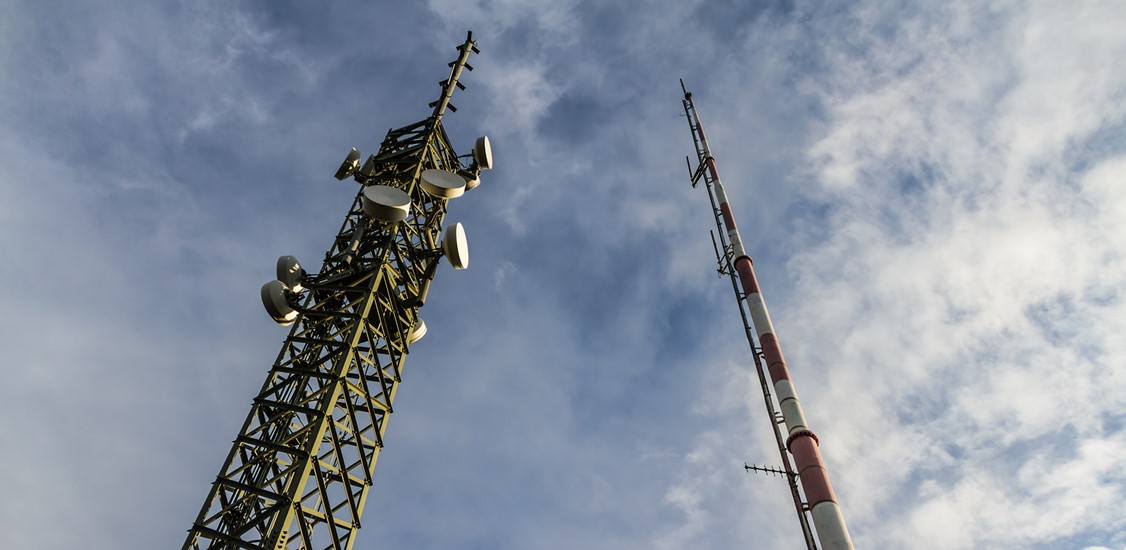When commercial cellular telephone services started almost 40 years ago, the mobile network operators (MNO) had to plan beforehand how to transport all of the outgoing and incoming calls from the base stations to the backbone inter-city, regional, national and international networks - and hence “backhaul” was born. In those times trying to deploy copper T1/E1 lines or similar quickly became problematic and, as a result, microwave radio links became the favored approach due to factors such as cost, time to deploy and configuration flexibility.
Indeed, microwave links, primarily in the 18, 23 and 38 GHz frequencies, have been the workhorse for cellular backhaul for almost 40 years and now approximately 70 percent of backhaul traffic worldwide travels over microwave connections. They have long range capabilities (several miles or roughly 10 - 15 km) and have added capacity over the years by using multiple radios to drive traffic over one link and via high modulation schemes, such as 2048 QAM. These modulation schemes have been necessary due to the increase of traffic generated initially by 2G/3G radio access networks, and now backhaul needs Gigabits or more of capacity as various flavors of LTE have been deployed. Unfortunately, the top capacity of a microwave link is about 1Gbps at full-duplex.
As we all know, the compute power of a smartphone is greater than that of a desktop PC only a few years old, and all of the new bandwidth-intensive services it enables are “maxing out” the LTE base station infrastructure. Today, the typical macro LTE base station serving 2000 subscribers requires 1Gbps or more of backhaul capacity and of course the 5G base stations coming online will generate even more “output.” For a rough comparison, consider that a typical 4G base station requires as much as 100 times the backhaul capacity as its 3G predecessor. Further, due to lower latency and increased bandwidth requirements, 5G base stations will be built in a much denser topography, especially in urban and suburban areas (e.g., many more small cells indoors and outdoors).
Therefore, the need for more backhaul capacity per link and the number of links is a given - so what new backhaul options are available? Fiber optic lines offer essentially unlimited capacity, but they are not “everywhere.” Deploying a new fiber optic line is a rather expensive (the GSMA estimates roughly $70K/km) and time-consuming experience, as the process can take months. In addition, it is just not possible to deploy fiber in certain areas, such as historic districts.
Increasingly, the new alternative is backhaul based on high-capacity mmWave technology operating in the license exempt V Band (60GHz) and the lightly licensed E Band (71-76/81-86GHz). mmWave radio links can be deployed within days at an average CAPex much lower than a fiber connection and it is also a cost-effective option to remedy the problem of maxed out microwave backhaul connections. mmWave systems in the V- or E-bands can currently offer capacities up to 10 Gbps full-duplex and software-upgradable options offer MNOs a viable “pay as you grow” approach.
mmWave radio systems in these bands are also lightly-licensed or license exempt, which further drives down costs. Regulatory bodies around the world are increasingly recognizing the value of the E-band, for instance, as it offers vast amounts of contiguous spectrum and has virtually no interference given its relative under-utilization over the years. Future interference will be minimal due to the physical characteristics of Rf at those frequencies. In addition to their capacity advantages, mmWave systems can deliver 99.999% throughput availability - less than five minutes of outage per year - to deliver a true carrier-grade service.
On the other hand, mmWave links do have shorter ranges, typically 3 miles or 5 km, which will require more links in a given area. However, advanced self-organizing network and self-healing mesh network techniques can mitigate this situation and other advanced solutions can double the range.
One range extender involves the use of software and a secondary link at a lower frequency and lower capacity as a backup connection. When the software program detects a degradation in the mmWave connection due to torrential rain, it will automatically switch traffic to the secondary link without dropping a packet. When the temporary event passes, the traffic moves back to the mmWave link. As a result, this combination of dual band antennas, integrated switches, and advanced software, can extend a 10Gbps link farther than ever before. There are numerous examples of operators deploying this type of technology today.
As noted above, regulators are beginning to “open up” the E-band and one MNO did not wait to take advantage. This MNO currently has more than two million LTE subscribers and most if not all of them will move to 5G over the next few years. To complement their fiber-based backhaul, this Operator had an extensive system of point to point microwave links (18, 23 and 38GHz) to connect their cell sites - for a total of 500 microwave links.
As their Radio Access Network added capacity with the introduction of LTE and soon 5G NR, the microwave links began running out of the capacity needed to connect these cell sites. While range was good with traditional microwave, the capacities topped out at 400Mbps and could only be achieved with advanced modulation technologies. The MNO decided therefore to migrate all microwave links at 5 km or less to E-band mmWave radios. Initial capacities are set at 1Gbps to support LTE and can expand to multi-Gigabit as 5G is deployed.
Upgrading these connections not only provides a much needed capacity boost, but is also more economical from both a CAPex and OPex perspective. License fees for E-Band deployments are significantly lower than those for microwave hence the company saves money with every microwave link they replace.
The next generation cellular technology, 5G NR, is poised to be a major disruptor with not only Gigabit performance to the end user, but single digit latency. The new applications and use cases are numerous. However, with this great innovation, comes a need to massively upgrade the infrastructure required to connect these 5G NR base stations at Gigabit speeds. Without that, none of this promise will be realized. Fiber, while a fantastic backhaul medium, is not ubiquitous and can be costly. For rapid, low cost 5G intra-cellular connectivity, no other wireless technology can deliver on the promise of 5G like mmWave.






















